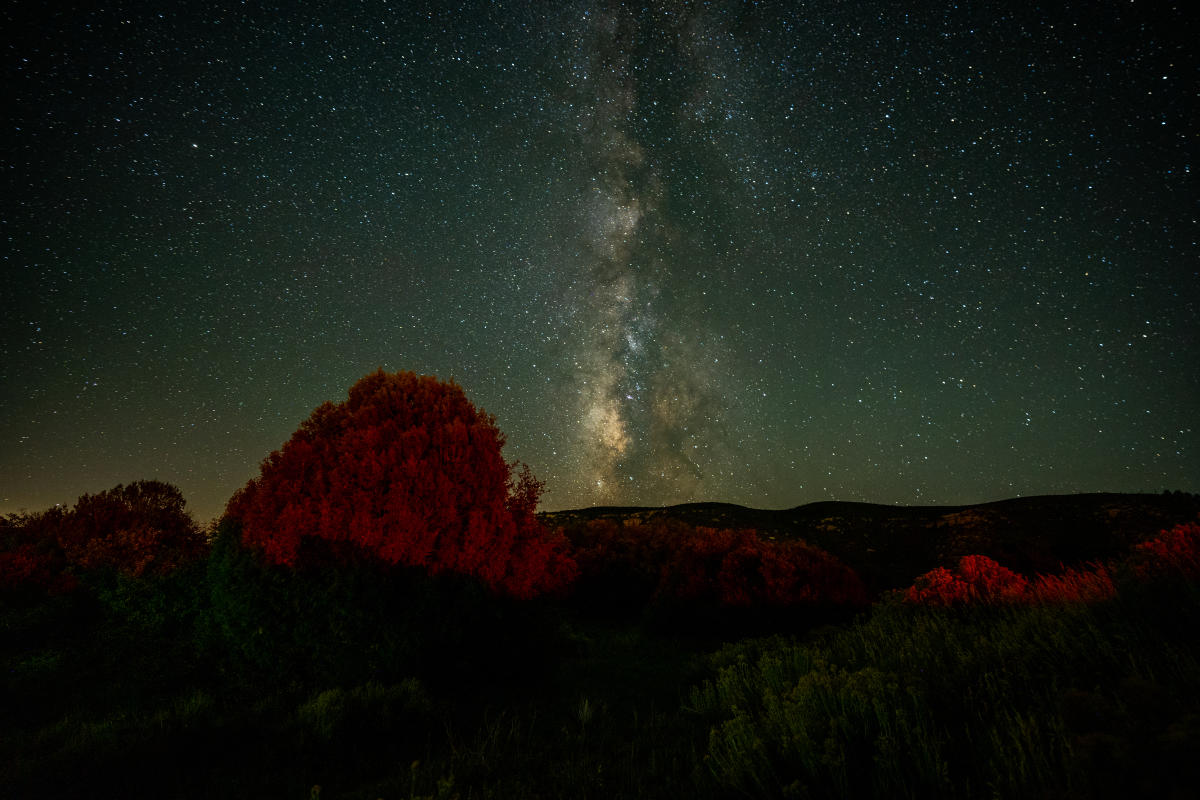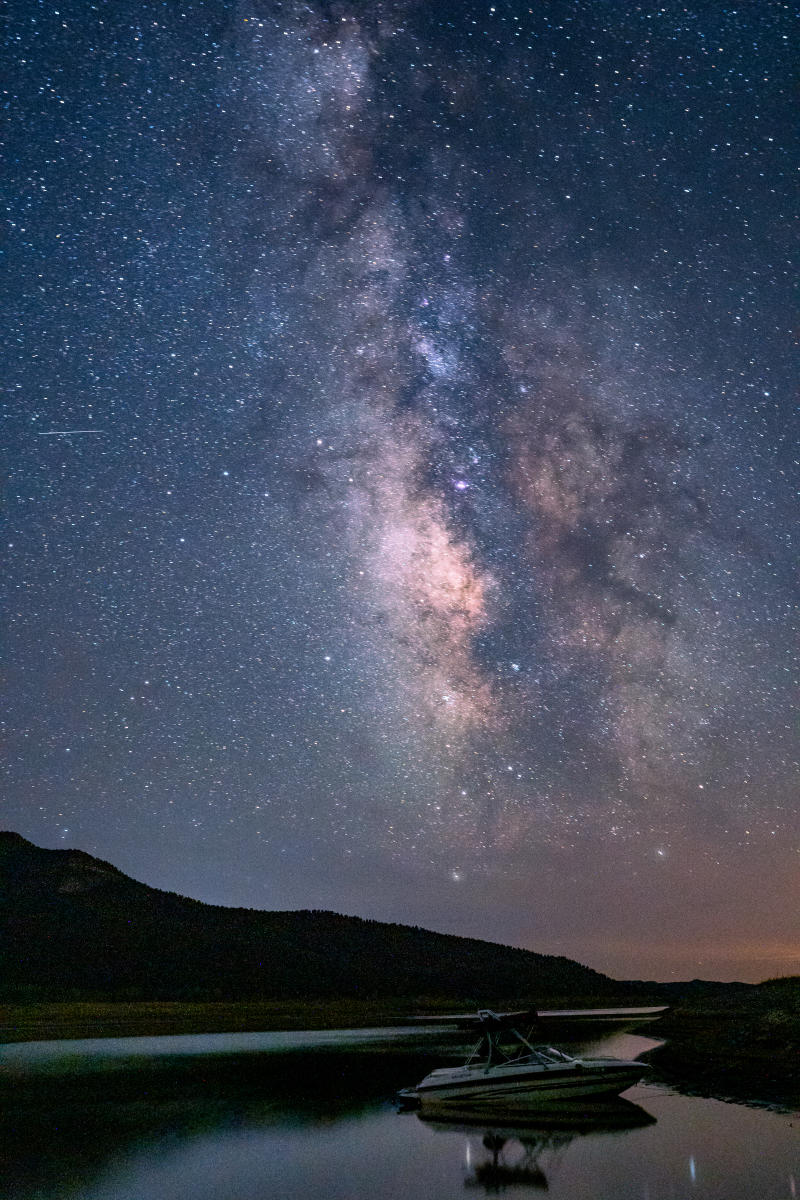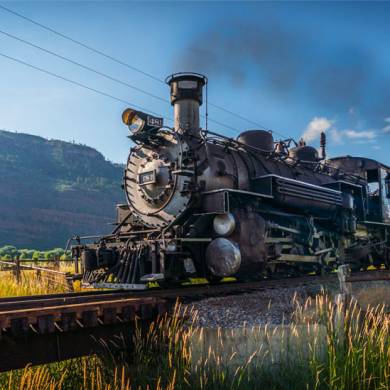Stargazing
Welcome to our guide on stargazing in Durango. Nestled amidst the southwestern part of Colorado, Durango offers some of the best celestial views in the United States.
The clear, dark skies make it an astronomy enthusiast's dream, providing ideal conditions to explore the wonders of the cosmos. Whether you're an experienced stargazer with a high-powered telescope or a beginner gazing up in awe, Durango's pristine skies won't disappoint.
Here, the Milky Way itself unfolds in all its glory, offering stunning displays of constellations, shooting stars, and even far-off galaxies. Seasonal meteor showers further enhance this breathtaking spectacle.
Join us as we take you on a journey through the best spots for stargazing around Durango, and prepare to connect with the universe in a way you've never done before.
Places to Go Stargazing
Let's delve into the top stargazing locations, each providing a unique perspective of the cosmos from Durango's impeccable vantage points and enhancing your celestial journey.
Mesa Verde National Park

Mesa Verde National Park, a short drive from Durango, offers deeply dark skies, making it a fantastic stargazing spot. Known for its Ancestral Puebloan cliff dwellings, provides an expansive view of the night sky, unimpeded by light pollution.
The park's remote location allows the stars to shine with incredible intensity, creating a celestial panorama that's unparalleled. You can witness constellations, planets, and the Milky Way with clarity. The silence and the mesmerizing view of the cosmos make for an unforgettable astral experience. If you are visiting during the month of September, be sure to see when they hold their annual star party in the park.
It’s an absolute must-visit for any stargazing enthusiast or astronomy lover.
Fun fact: Mesa Verde National Park is an International Dark Sky Park as of 2021!
Chimney Rock National Monument
Chimney Rock National Monument, another premier stargazing location, is a mere 35 minutes from Durango. This secluded location, known for its towering rock formations and rich archaeological history, promises an unrivaled celestial showcase.
From this vantage point, you'll witness the breathtaking dance of countless stars and celestial bodies across the night sky. Star clusters, nebulae, and the glow of distant galaxies are yours to discover.
What makes Chimney Rock truly unique is the alignment of its rock formations with celestial bodies during the equinoxes— a sight that elevates the stargazing experience to even greater heights. If you are visiting May through August, take part in one of their excellent Night Sky programs.
Don't miss the opportunity to immerse yourself in this astronomical wonderland.
Before setting off, remember that Durango's altitude can provide cold nights, even during the summer, so be prepared with warm clothing, snacks, and a cozy blanket.
Haviland Lake
Haviland Lake, with its serene waters and surrounding mountain landscape, offers a tranquil setting for stargazing.
Situated just 18 miles north of Durango, this spot is an excellent choice for those seeking a peaceful evening under the stars. The stunning reflection of the cosmos on the still lake surface amplifies the beauty of the stargazing experience.
The absence of artificial lights allows the natural luminosity of the star-studded sky to dominate, enhancing the visibility of celestial objects.
Whether you're cozying up on the lakeside or embarking on a midnight paddle, Haviland Lake promises an immersive astral spectacle.
Ski Hesperus
Hesperus Ski Area, a beloved ski area located 11 miles west of Durango, is also known for its spectacular stargazing opportunities. The high elevation and clear, unpolluted skies create an effervescent celestial display. Whether snuggled up by the lodge's fire pit or exploring the slopes after dark, the dazzling array of stars overhead is a sight to behold. The location offers expansive vistas and minimal light pollution emanating from the nearby towns.
Vallecito Reservoir
Vallecito Reservoir, a large body of water in a picturesque valley, provides a serene backdrop for a night under the stars. The reflection of the stars on the calm water surface creates a mesmerizing stargazing experience. Its location away from city lights ensures an unobstructed view of the cosmos. Please note that the location is surrounded by majestic mountains, which may limit your view of the night sky. However, the limited view is compensated for by an enchanting display of countless stars.
Lemon Reservoir
Lemon Reservoir is another tranquil spot perfect for stargazing. Surrounded by the San Juan National Forest, the area's natural beauty is elevated by the night sky's splendor. The quiet, serene setting away from city lights provides an ideal environment for those seeking a peaceful astronomy adventure. Like Vallecito, its sky views are somewhat restricted, but the darkness that can be observed is absolutely breathtaking.
Molas Pass

Molas Pass, positioned on the scenic Million Dollar Highway, offers expansive night sky views. The pass's high altitude—over 10,000 feet—means you can get closer to the stars, providing a unique and awe-inspiring stargazing experience.
Navajo State Park

Navajo State Park invites you to explore the cosmos against the backdrop of a desert landscape. The park is far from city lights, and its high desert location ensures clear, dark skies perfect for stargazing. From the park's campgrounds or the beach, you'll have an unobstructed view of the celestial wonders above. If you plan on camping overnight, check in with the Ranger offices. Many Colorado State Parks offer enjoyable evening activities that are fun for the entire family!
Resources
Self-Guided Experiences: Rent a Dark-Sky Kit (Available May 2024)
Looking for a captivating stargazing adventure? Discover the wonders of the night sky with our exclusive dark sky kit available at the Durango Welcome Center. Spend your evening exploring the stars, galaxies, and constellations with our self-discovery dark-sky kits. Kits are available to rent year-round!
Each kit includes:
- Binoculars (Celestron 8x42mm)
- Clamps for smartphones to take photos through the binoculars
- Star finder
- Red light
- Activities for children
- Light quality meter
Things to Know About Stargazing in Durango
While in Durango or Bayfield, remember to look up and enjoy our exceptionally dark skies, even in the town center. The City of Durango and the Town of Bayfield are not only naturally equipped with celestial beauty, but they are also actively working towards acquiring their Dark Sky Community Certification—an international recognition from the International Dark-Sky Association. These communities are implementing thoughtful lighting policies and public education initiatives to preserve the area's dark skies. Their commitment to reducing light pollution is evident and is a testament to their dedication to maintaining the region's celestial beauty.
Care for Durango
When out enjoying any nighttime activities try to follow these lighting guidelines:
-
Purposeful Usage: Use light only when necessary, especially in natural areas. Let your eyes adjust to the natural light, you would be surprised how fun night hikes are!
-
Directional Lighting: When using flashlights or headlamps direct them downward on the ground. Don’t wave your lights around, to minimize disturbing wildlife and other people.
-
Use lowest setting: If you have a light with multiple brightness settings, use the lowest level of light that is safe and comfortable.
-
Warm Color Spectrum: Try to buy lamps that are warm-colored, these are less disruptive to nocturnal wildlife and our own circadian rhythms. For stargazing consider a red light. in order to keep your eyes adjusted to the dark for optimal star gazing.
-
Use red lights: Did you know it takes 20 to 30 minutes for the human eye to adapt to the dark? Red Light is the ideal color for stargazing as it doesn't disrupt our night vision, making it easier to spot faint celestial objects. This is why many astronomers use red light flashlights or headlamps when observing the night sky.


